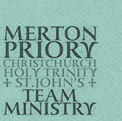Sermons
Sunday 2nd April 2017, Lent 5
John 11:1-45
by Revd Chris Palmer
On Easter Eve this year, at the Easter Vigil, we will baptise Sebastian. This brings joy to my heart, not only because baptisms are a reason to celebrate, but because the Easter Vigil is the baptism service par excellence of the Christian calendar. To celebrate the new life of Christ by seeing a new Christian receive the new life of Christ is how it should be. It is how it anciently was. Indeed go back 1500 years, and the church welcomed all its new members at the Easter Vigil. If you wanted to be a Christian this was the service you were aiming for. Lent was the period of preparation for baptisms at Easter. And in the night of resurrection new Christians were called to life.
Today’s Gospel is intimately connected with this pattern. Because the readings of the third, fourth, and fifth Sundays of Lent in Year A of the lectionary are the ancient readings read in preparation for the baptism of new Christians at Easter. The woman at the well’; Jesus offers her ‘living water’. Then there’s the man born blind; Jesus gives him sight – we missed that reading because of Mothering Sunday. Finally the raising of Lazarus; Jesus calls him to new life. Living water, sight, and life – Jesus offers us his baptised people these things.
The words that Jesus shouts to Lazarus in the reading, ‘Lazarus, come out’, he also shouts to us. ‘Chris, come out’, ‘…., come out’. He is calling us out of whatever deadens us. Our compulsions or sins or attitudes; our bad habits or guilt or fear; our self-pity or grandiosity or the grudges we harbour. God is calling us to freedom and new life. I don’t want to give the impression that becoming liberated from these is an easy single step. Lazarus comes out of the tomb, but he still needs to be unbound and after that he still has to engage with the task of living; his new life doesn’t free him from the necessity of forming relationships, learning to forgive, making hard choices and so on. But the gift of God in ‘Lazarus, come out’ is the start he needs. Just as for us our baptism is the start we need on the journey of life with Christ.
And I want to take the rest of this sermon to unfold the wonderful drama and invitation that God makes to us through the liturgy of Holy Week. And to encourage you to join in and respond to God’s call to new life in the movement of these services.
I hope you’ve all got a Holy Week leaflet. We’ve given them out for the last two Sundays – and they have everything in them. I want to talk about the three services that make up the Triduum – which simply means ‘three days’: Maundy Thursday, Good Friday, and Easter Eve. These are the most distinctive services of the Church year. Their essential elements extend back to the early centuries of the church’s life.
And importantly, these services form a single act of worship, which takes us on a journey from the upper room, via Gethsemane, and Calvary, to the empty tomb.
Maundy Thursday, on the Thursday evening before Easter, celebrates the Last Supper. A Jesus washed his disciples’ feet, gave them bread and wine for the first time; and afterwards goes to pray in the garden of Gethsemane. The liturgy acts these out. We wash the feet of twelve members of the congregation; some of you know who you are already! This can feel shocking; it reminds us that the call to be washed by Jesus is never comfortable; Peter objected, but as Jesus said to him, so he says to us, ‘unless I wash you, you cannot be part of me.’.
The Eucharist that follows is like all other Eucharists, except with heightened significance of being the night of the Eucharist itself. And then the liturgy finishes quite differently. There is no blessing; no sending out. Instead the decoration is removed from the church – symbolising he desolation of Jesus. And bread and wine from this Eucharist are taken in procession to a side altar where a watch of prayer goes on until Midnight. This represents Jesus’ prayer in Gethsemane. People come and go from this watch of prayer; if you come to the service you’re not trapped here til midnight! But with the encouragement to pray for one hour, because Jesus said to his followers, ‘Could you not watch with me, even one hour.’
The Liturgy of Good Friday celebrates the death of Jesus. Here at Holy Trinity we have a children’s service in the morning. But the service which is part of the Triduum is in the afternoon, at St John’s. There are several distinctive features of this service. But I want to concentrate on two. The proclamation or veneration of the cross, in which a wooden cross is brought into church and people are invited to come and pray in front of it. This most moving of ceremonies is simply an invitation to bring our thanks and adoration and love to Jesus who died for us. It is an act of worship in which we strip away all our pretension and self-sufficiency, and come and give our lives to Jesus at the foot of his cross. I’ve seen little children come; I’ve seen old people come who try to get down to kneel, and need a helping hand up. I’ve seen people come with tears, or laughter; I’ve seen people come making deeply catholic and traditional devotions, kissing the cross; and people come with a nail, or in one church putting their name on a piece of paper at the foot of the cross saying, I am giving myself to Jesus.
The service finishes with communion. It is traditional not to celebrate the Eucharist on Good Friday, but instead to give communion from the sacrament kept over from the previous evening. It is one of the things that unites these two liturgies as a single act of worship.
The Easter Vigil is held after dark on Easter Eve. The word ‘vigil’ is completely misleading; it refers to a series of readings and psalms from the Old Testament that can stretch over several hours. But this part of the service is often shortened, and I've shortened it just about as much as is possible in order to keep the service an ordinary length. It tends to pass in about 10 minutes now. I do somewhat regret this, but I also suspect if the service went on for much of the night fewer people would come!
It is the most dramatic and distinctive service of the year. It starts with a bonfire in the garden. We light the new Paschal candle and process it into church gradually lighting everyone’s candles. Once in church we hear an ancient song , the Exsultet, sung to its ancient plainsong chant. After this the vigil readings; and then as the resurrection is proclaimed a clatter of organ and bells and whatever other sounds make a joyful noise. The service continues with baptism and the renewal of baptism promises – the whole of Lent and Holy Week leading to this moment in which the newly baptised receive new life with Jesus. And then the first Eucharist of Easter. Jesus is alive, Lent is ended. And afterwards we break our Lenten fast with a party.
I describe this, because I think many people – even regular worshippers – have not experienced these services. But they are the nucleus of Christian worship. The whole of the rest of the church’s worship revolves around these stories and liturgies. They contain a deep invitation from Jesus to receive new life – to be washed, feed, loved, and raised. They work their peculiar grace simply by asking us to be with Jesus at each stage; to be there in the upper room; to be there in Gethsemane; to be there at the foot of the cross; to be there in the garden of resurrection. In choosing simply to be with Jesus, we discover that he works within us, changing us in a way that takes us by surprise. We don’t have to struggle, labour, or force his grace; all we have to do is turn up and let God do the rest.



